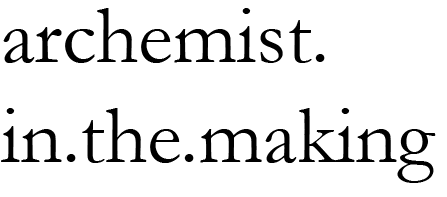“So… would you consider Instagram to be a duck or a decorated shed?”
- The Archemist Podcast, Episode Three// The Sims, Colour, Dentistry and Ducks of Instagram
Instagram has always been the crux of our conversations and frustrations with architecture advertising. Ever since being exposed to the marketing side of the platform, I have grown increasingly bitter and resentful to something that I once loved. The act of counting hashtags, ensuring the photo is aligned to its thirds were becoming too familiar.
And I wanted to escape from it.
I resonated with Joseph Gordon-Levitt’s TED Talk ‘How Craving Attention Makes You Less Creative’, especially when he commented on his awareness on his lack of focus with the rise of increasing network the world of the internet provided. He lamented on the distraction of planning a witty comeback on Twitter while reading scripts – and lost his opportunity to connect with the character. The need and want for attention were already distracting enough, yet it is unfortunate when the attention is a source of seeking validation through manipulating something we enjoy doing.
I have to admit, I was once guilty for craving ‘likes’, comments that tell me that I was ‘pretty’. When growing up in a culture that words of validation is more important than physical demonstration, it was effortless for me to fall prey into that mentality. Let alone, with the growing pace of how society is speeding, we’ve become addicted to the process of ‘instant gratification’ – a term that has haunted me since the beginning of last year.
Instagram, while very useful and beautiful, has somewhat become a demise for many architecture aesthetics and to the design industry. Confining the images in a square, cropping and omitting the hard work. The facades of these images also could potentially restrict and limit our creativity, as their popularity is powerful enough for clients to crave a similar visual to achieve similar numbers of ‘likes’. This can also be argued for the detrimental over-use of Pinterest as well.
While I am aware that some may argue that Instagram imitates the function of printed media – publications adds a layer of human quality to the design. Having a physical magazine or book, tactile in the texture of the pages and the act of flipping through adds an additional layer of appreciation. Not to mention, the accompanying text provides an air of conversation with the reader. Instagram and Pinterest follow suit with the comments section and scrolling through, however, with the network being somewhat broad, we were able to switch to the next without giving proper appreciation quickly.
Sometimes, I’d like to perceive Instagram as a new version of Venturi and Brown’s Duck and Decorated Shed. As Gordon-Levitt added attention to Instagram is used as a platform to attract attention – the statement is bold enough to be a ‘sign’ for the architecture firm. Let alone it can be argued that the overall profile aesthetic is the inverted shed when the account has posted enough images in a carefully planned manner. Alternatively, we can also say that capturing that one perfect image of the design becomes the Duck for the design firm, and thus we can always associate their name with that image.
“The duck is the special building that is a symbol; the decorated shed is the conventional shelter that applies symbols”
- (Venturi, Denise Scott Brown, Izenour, 1977, 87)
It is a strange phenomenon – the Duck and the decorated shed. In fact, the theory can really be applied anywhere beyond the physical aspect of architecture. I am not afraid to say that Instagram Influencers can aid an image to become a duck themselves – as their presence has already gained a following. The presence of a person is definitely effective and powerful – let alone more human.
Instagram is indeed a powerful tool because it provides a modern ‘what if’ rhetorical for the scrollers. Because we are all visually orientated, it is not surprising that how we pose in images to make ourselves feel better. However, there are times where I will always question the sincerity of using design as an attention-craving catalyst. Ever since the NGV Triennial – my friends and I have grimaced at the design of specific art exhibitions that have catered to the digital square. People want to follow suit and create a similar profile picture on their profiles – looking nice is one matter, however, sometimes are positioned to a point where we’ve been distracted from the primary purpose: to appreciate art.
Of all the museums I’ve visit so far - Studio Ghibli Museum prohibits photos inside!
There will be days where I would like to have a satisfying photo for myself, however, sometimes I do feel apologetic when I go to an art exhibition with that mindset. I begin to question my sincerity in visiting the art exhibition – and whether I’ve lost my focus.
Honestly, I miss the days where I would be swimming in crowds and take photos of artworks and not queuing to have my next profile taken against a prop-filled wall. Having said, I think I might be able to appreciate the artwork more if I was banned from taking photos at the first place.
I better make another trip to Studio Ghibli museum then!
Related work: Expectation vs. Reality III: When the love letter becomes unwanted; The Archemist Podcast, Episode Three// The Sims, Colour, Dentistry and Ducks of Instagram
References:
Venturi, Robert, Denise Scott Brown, and Steven Izenour. Learning from Las Vegas (Exerpts). Cambridge: MIT Press, 1977





